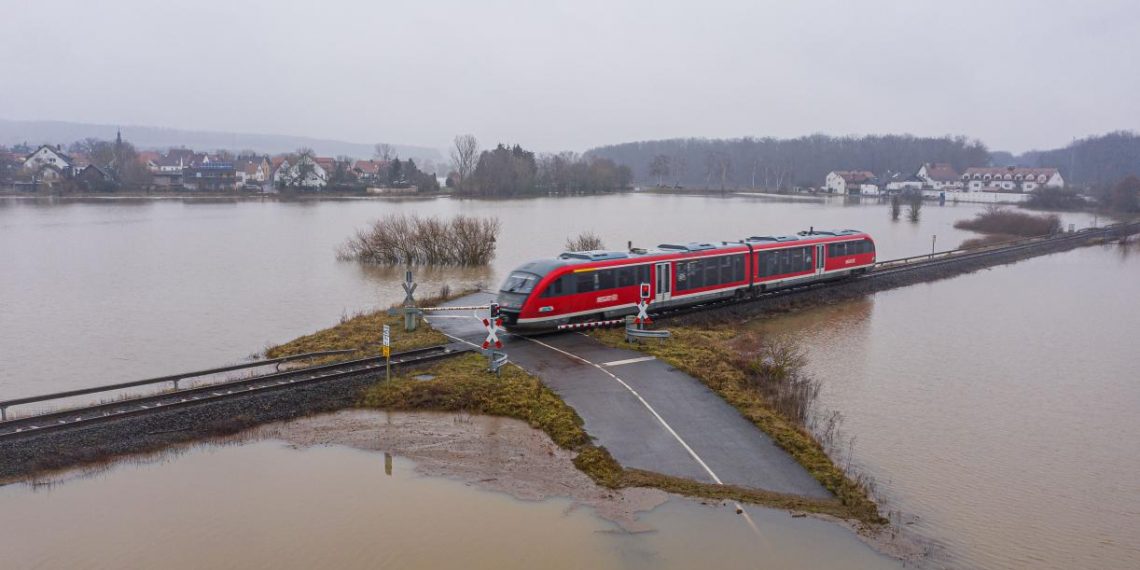In Germany and other parts of western Europe, floodwaters recently destroyed villages and wide swaths of farmland. It was the worst flooding the area had seen in decades. The death toll was nearly 200 people.
German Chancellor Angela Merkel used apocalyptic terms to describe what she saw during her visit to the flood zone: “Terrifying.” “Ghostly.” “War zone.” Within days, she announced a 400 million Euro immediate aid package for the worst-affected people.
Similar flooding happened in cities in China, on the heels of the same in London. Communities throughout Italy, the U.S. and many other places were inundated in July 2021.
Floods are only one common problem. Wildfires, heat domes and droughts are all now part of everyday life in many countries. No country, no matter how advanced, can buy its way out of climate change. What we’re seeing now is best-case scenario for our planet — and that’s only if we’re able to severely and immediately limit the emissions that cause climate change.
These type of climate-related disasters dominate news cycles now because they’re happening more often, with severe consequences, in wealthy countries. This attention is much-welcomed. We need a wider public discussion of the climate-related risks we are facing today, not in some distant future.
However, these extreme weather events are not new for many vulnerable countries, where droughts, floods, pest infestations and a host of other problems caused by climate change have been happening for years. A decade ago, for example, warming ocean water contributed to droughts that led to food shortages and famine in Ethiopia and Somalia. Meteorologists warned in 2006 that global warming was causing stronger hurricanes in the Caribbean.
There’s a new sense of urgency around decarbonization as the impacts of climate change become more obvious to people who have the money to do something about it. Decarbonization is a necessity if we’re going to preserve our planet.
But people everywhere — and especially those in low-income countries — need much more than that. The global response to the climate emergency must be to pursue sustainable infrastructure that can withstand changing weather patterns and ensure that economies can grow in the face of dramatically changed environments.
The deeper pockets of wealthy countries mean that people there can rejuvenate their economies as they rebuild their homes and businesses, even while grappling with life-changing loss — and people of all income levels can often access aid. Meanwhile, people in under-resourced countries fall deeper into poverty when their farms, schools, small businesses and homes are washed away or lost to fire. In those places, there’s often minimal post-disaster aid — and little long-term assistance to rebuild sustainably.
It’s been more than a decade since countries party to UN-led climate negotiations agreed to an annual goal of $100 billion per year by 2020 to support developing nations’ climate adaptation and mitigation efforts. Those commitments have fallen short. In 2018, the most recent year for which data is available, total climate finance mobilized hovered just under $80 billion.
Contributions were not increasing at the needed pace even before the global COVID-19 pandemic, leading analysts to expect even lower numbers than originally anticipated by the time the next round of official reports is available. Meanwhile, the needs of developing countries are on the rise. According to UNEP estimates, they’ll collectively need up to $300 billion per year by 2030 and up to $500 billion per year by 2050 to cover adaptation costs alone.
There’s a clear course of action here. Wealthy nations need to take seriously their commitments to deliver $100 billion annually to help developing countries meet their climate-related needs. However, this is far from enough.
This target will also need to be expanded by up to 5 times to meet growing climate-related needs — ideally before 2030, the target year for many countries’ national climate plans. At this year’s COP26 gathering in Glasgow in November, countries will start negotiations for a post-2025 collective finance goal.
Leaders from the U.S., Canada, France, Italy, Germany and elsewhere who experienced recent climate-related disasters must hold in their memories the images they’re seeing right now and act.
World leaders across the board need to develop a clear, shared vision of how targeted funding could bring unprecedented innovation to create sustainable communities. The funding for this innovation should be led by wealthy countries that have for too long promised this finance to people in developing nations.
The mechanisms for this funding exist. The money is out there. As climate disasters grow more common and more costly, it’s time to aggressively funnel resources to the places where they are needed most.



